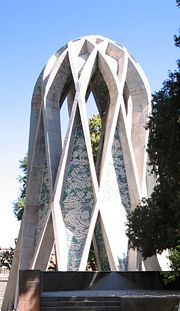Mashhad
| Mashhad مشهد |
|||
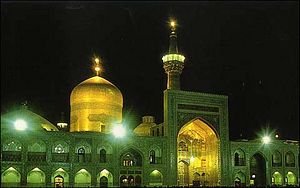 |
|||
|
|||
| Nickname(s): Mashhad al Reza | |||
|
Mashhad
|
|||
| Coordinates: | |||
| Mashhad | 818 AD (Martyrdom Of Imam Reza) | ||
|---|---|---|---|
| Government | |||
| - Mayor | Saeed-Hashem Hashemy | ||
| Area | |||
| - Total | 204 km² (78.8 sq mi) | ||
| Elevation | 985 m (3,232 ft) | ||
| Population (2006[1]) | |||
| - Total | 2,427,316 | ||
| - Population Rank in Iran | 2nd | ||
| Over 20 million pilgrims and tourists per year[2] | |||
| Time zone | IRST (UTC+3:30) | ||
| - Summer (DST) | not observed (UTC+3:30) | ||
| Website: http://www.Mashhad.ir | |||
Mashhad (Persian: مشهد, literally the place of martyrdom) is the second largest city in Iran and one of the holiest cities in the Shia world. It is located 850 kilometers (500 miles) east of Tehran, at the center of the Razavi Khorasan Province close to the borders of Afghanistan and Turkmenistan. Its population was 2,427,316 at the 2006 population census.[1]
Now Mashhad is notably known as the resting place of the Imam Reza (Ali ibn Musa al-Rida). A shrine was later built there to commemorate the Imam, which in turn gave rise to increasing demographic development.
Geography and demographics
| for Mashhad | |||||||||||||||||||||||||||||||||||||||||||||||
|---|---|---|---|---|---|---|---|---|---|---|---|---|---|---|---|---|---|---|---|---|---|---|---|---|---|---|---|---|---|---|---|---|---|---|---|---|---|---|---|---|---|---|---|---|---|---|---|
| J | F | M | A | M | J | J | A | S | O | N | D | ||||||||||||||||||||||||||||||||||||
|
33
7
-5
|
36
9
-3
|
52
14
2
|
49
21
8
|
26
27
12
|
3
32
16
|
1
34
18
|
1
33
15
|
1
29
10
|
11
22
5
|
16
16
1
|
27
10
-3
|
||||||||||||||||||||||||||||||||||||
| temperatures in °C precipitation totals in mm |
|||||||||||||||||||||||||||||||||||||||||||||||
|
Imperial conversion
|
|||||||||||||||||||||||||||||||||||||||||||||||
The city is located at 36.20º latitude and 59.35º east longitude, in the valley of the Kashaf River near Turkmenistan, between the two mountain ranges of Binalood and Hezar-masjed. The city benefits from the proximity of the mountains, having very cold winters, pleasant springs, mild summers, and beautiful autumns. It is only about 250 km (156 miles) from Ashgabat, Turkmenistan.
The city is the administrative centre of Mashhad County (or the shahrestan of Mashhad) as well as the somewhat smaller district (bakhsh) of Mashhad. The city itself, excluding parts of the surrounding bakhsh and shahrestan, is divided into 13 smaller administrative units, with a total population of almost 2,5 million.[1]
Mashhad consists mainly of people of Iranian descent. There are also over 20 million pilgrims who visit the city every year.[2]
History and notable events
|
|
|
|---|---|
| The Fourteen Infallibles
The Twelve Imams |
|
| Concepts
Fourteen Infallibles |
|
| Principles
Monotheism |
|
| Practices
Prayer · Fasting · Pilgrimage |
|
| Holy cities
Mecca · Medina · Jerusalem |
|
| Groups
Usuli · Akhbari · Shaykhi |
|
| Scholarship
Marja · Ayatollah · Allamah |
|
| Hadith collections
Peak of Eloquence · The Pslams of Islam · Book of Fundamentals · The Book in Scholar's Lieu · Civilization of Laws · The Certainty · Book of Sulaym ibn Qays · Oceans of Light · Wasael ush-Shia · Reality of Certainty · Keys of Paradise |
|

In the beginning of the 9th century (3th century AH) Mashhad was a small village called Sanabad situated 24km away from Tus. There was a summer palace of "Hamid ibn Qahtabi", the governor of Khorasan. In 808 when Harun al-Rashid, Abbasid caliph, was passing through there to settle down the insurrection of "Rafi ibn Leith" in Transoxania, he became ill and died. He was buried under the palace of Hamid ibn Qahtabi. Several years later in 818 Imam Reza was martyred by Al-Ma'mun and was buried beside the grave of Harun. [3]
After this event this place was called as Mashhad al-Rida (the place of martyrdom of Ali al-Rida). Shias and sunnis started visiting there for pilgrimage of his grave. By the end of the 9th century a dome was built on the grave and many buildings and Bazaars sprang up around it. During more than a millennium it has been devastated and reconstructed several times. [4]
It was not considered a great city until Mongol raids in 1220 which caused the destruction of many large cities in the Greater Khorasan territories, leaving Mashhad relatively intact. Thus the survivors of the massacres migrated to Mashhad.[5] When the famous world traveller Ibn Battuta visited the town in 1333, he reported that it was a large town with abundant fruit trees, streams and mills. A great dome of elegant construction surmounts the noble mausoleum, the walls being decorated with colored tiles.[2]
Later on, during the Shahrokh era, it became one of the main cities of the Timurid dynasty. In 1418 his wife Goharshad funded the construction of an outstanding mosque beside the shrine, which is known as Goharshad Mosque.[6] The mosque remains relatively intact to this date, its great size an indicator to the status the city held in the 15th century.
Shah Ismail I, founder of the Safavid dynasty, conquered Mashhad after the death of Husayn Bayqarah and the decline of the Timurid dynasty. Mashhad was later captured by the Uzbeks during the reign of Shah Abbas I, only to be retaken by the Shah Abbas in the year of 1597 after a long and severe struggle, defeating the Uzbeks in a great battle near Herat as well as managing to drive them beyond the Oxus River.
Shah Abbas I wanted to encourage Iranians to go to Mashhad for pilgrimage. he himself is known to have walked from Isfahan to Mashhad. During the Safavid era Mashhad gained even more religious recognition, becoming the most important city of the Greater Khorasan as several Madrasah and other structures were built beside the shrine of the Imam Reza.
Besides its religious significance, Mashhad has played an important political role as well. It saw its greatest glory under Nadir Shah, ruler of Iran from 1736 to 1747 and also a great benefactor of the shrine of the Imam Reza, making the city his capital. It remained the capital of the Afsharid dynasty until Agha Mohammad Khan Qajar conquered the then larger region of Khorasan in 1796.
In 1912, the sanctuary of the Imam Reza was bombed by the Russian forces, causing widespread and persisting resentment in the Shiite Muslim world.
1935 Imam Reza shrine rebellion
In 1935 a backlash against the modernizing, anti-religious policies of Reza Shah erupted in the Mashed shrine. Responding to a cleric who denounced the Shah's heretical innnovations, corruption and heavy consumer taxes, many bazaaris and villagers took refuge in the shrine, chanted slogans such as `The Shah is a new Yezid.` For four full days local police and army refused to violate the shrine and the standoff was ended when troops from Azerbaijan arrived and broke into the shrine,[7] killing dozens and injuring hundreds, and marking a final rupture between Shi'ite clergy and the Shah. [8]
1994 Imam Reza shrine bombing
On June 20, 1994, an explosion from a bomb occurred in a prayer hall of the shrine of the Imam Reza[9] The bomb that killed at least 25 people on June 20 in Mashhad exploded at Ashura.[10] Mehdi Nahvi, a member of the People's Mujahedin of Iran (MKO), an Iraqi-based opposition group, claimed responsibility. The MKO stated that the bombing was carried out to commemorate the anniversary of the group's founding on June 20, 1981. Although government blamed the Mujahedin-e-Khalq in a TV show to avoid sectarian conflict between Shia and Sunni, the Pakistani daily "News" of March 27, 1995 reported, "Pakistani investigators have identified a 24-year-old religious fanatic Abdul Shakoor residing in Lyari in Karachi, as an important Pakistani associate of Ramzi Yousef. Abdul Shakoor had intimate contacts with Ramzi Ahmed Yousef and was responsible for the June 20, 1994, massive bomb explosion at the shrine Imam Ali Reza in Mashhad."[11]
Religious minorities
Though primarily a Muslim city, Mashhad has harbored a number of religious minorities over the centuries. Among these were Jews, who in 1839 were forcibly converted to Islam. However, in truth they lived a double life: outwardly they conformed to Islamic ways, and were known as "Jadid al-Islam" or "New Muslims," but secretly they preserved a Jewish identity and Jewish traditions.[12]
There was a Jewish district in Jennat Street. Jennat Street where the most prestiges shopping centers of Mashhad located at the time and was one the most expensive places of Mashhad.
The Bahá'í Faith has a history of victory and religious persecutions in this city. The latest was the executions of two Baha'is in 1998.
Current religious situation
- See also: Imam Reza shrine
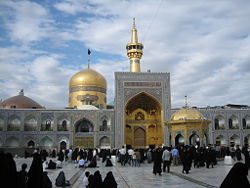
Today the holy shrine and its museum hold one of the most extensive cultural and artistic treasuries of Iran, in particular manuscript books and paintings. Several important theological schools are associated with the shrine of the Eighth Imam.
The second largest holy city in the world, Mashhad attracts more than 20 million tourists and pilgrims every year, many of whom come to pay homage to the Imam Reza shrine (the eighth Shi'ite Imam). It has been a magnet for travellers since medieval times.[2] It is said that the rich go to Mecca but the poor journey to Mashhad. Thus, even as those who complete the pilgrimage to Mecca receive the title of Haji, those who make the pilgrimage to Mashhad – and especially to the Imam Reza shrine – are known as Mashtee, a term employed also of its inhabitants. It is thought that over 20 million Muslims a year make the pilgrimage to Mashhad.
Astan Quds Razavi
- See also: Astan Quds Razavi
Culture
Long a center of secular as well as of religious learning, Mashhad has been a center for the arts and for the sciences. The large Ferdowsi University of Mashhad, named after the great Iranian poet, is located here. The Madrassa of Ayatollah Al-Khoei, originally built in the seventeenth century and recently replaced with modern facilities, is the city's foremost traditional centre for religious learning. The Razavi University of Islamic Sciences, founded in 1984, stands at the centre of town, within the shrine complex. The prestige of traditional religious education at Mashhad attracts students, known as talaban, internationally.
Mashhad is also home to one of the oldest libraries of the Middle-East called the Central Library of Astan-e Quds Razavi with a history of over six centuries. The Astan-e Quds Razavi Museum, which is part of the Astan-e Quds Razavi Complex, is home to over 70,000 rare manuscripts from various historical eras. There are some six million historical documents in the foundation's central library.
In 1569 (977 H), 'Imad al-Din Mas'ud Shirazi, a physician at the Mashhad hospital, wrote the earliest Islamic treatise on syphilis, one influenced by European medical thought.
Kashmar rug is a type of Persian rug indigenous to this region.
Attractions

Apart from Imam Reza shrine there is a number of beautiful large parks, the tombs of historical celebrities in nearby Tus and Neyshabour, the tomb of Nadir Shah and Kooh Sangi park and Mellat Park that have modern attractions for children such as the biggest ferris wheel or fanfar (چرخ و فلک) in Iran and Koohestan Park-e-Shadi Complex that includes a zoo, where many wild animals are kept and which attracts many visitors to Mashhad. It is also home to the Mashhad Airbase (formerly Imam Reza airbase), jointly a military installation housing Mirage aircraft, and a civilian international airport.
Some points of interest lie outside the city: the tomb of Khajeh Morad, along the road to Tehran; the tomb of Khajeh Rabi' located 6 kilometers north of the city where there are some inscriptions by the renowned Safavid calligrapher Reza Abbasi; and the tomb of Khajeh Abasalt, a distance of 20 kilometers from Mashhad along the road to Neishabur. (The three were all disciples of Imam Reza).
Among the other sights are the tomb of the great poet Ferdowsi in Tus, 24 kilometers distance, and the summer resorts at Torghabeh, Torogh, Akhlamad, Zoshk, and Shandiz.
The Shah Public Bath, built during the Safavid era in 1648, is an outstanding example of the architecture of that period. It was recently restored, and is to be turned into a museum.
Transportation

Airport
Mashhad is served by the Mashhad International Airport which handles domestic flights to Iranian cities and international flights, mostly to neighboring, Arab countries.
Metro
The Mashhad Urban Railway Corporation (MURCO) is constructing a metro system for the city of Mashhad. It is planned to be finished by 2008.
Rail
Mashhad is connected via rail to two major rail terminals: Tehran and Sarakhs at the Turkmen border. Some freight trains continue from Sarakhs towards Uzbekistan and even to Almaty, but have to change bogies because of the difference in Rail gauge. A third connection to Bandar Abbas has been projected, but has not yet been completed. Rail services are operated by Raja Trains.
Shopping
The major shopping precincts are:
- Almas-e-Shargh Shopping Center
- Zist-e-Khavar Shopping Center
- Proma Shopping Center
- Kian Center
- Jennat Street Mall
- International Bazaar Shopping Complex
- Bazaar Reza
- Bazaar Markazi
Colleges and universities
- Ferdowsi University of Mashhad (FUM)
- Mashhad University of Medical Sciences
- Islamic Azad University of Mashhad
- Montazeri Technical College of Mashhad
- Payame Noor University of Mashhad
- Comprehensive University of Applied and Practical Sciences, Khorasan
- Imam Reza University
- Razavi University of Islamic Sciences
- Khayyam Institute of Higher Education
- Sadjad Institute of Higher Education
- Binalood Institute of Higher Education
- Samen Institute of Higher Education
- Montazeri Institute of Higher Education
- Eqbal Lahoori Institute of Higher Education
- Khavaran Institute of Higher Education
Mashhad as capital of Persia and Independent Khorasan
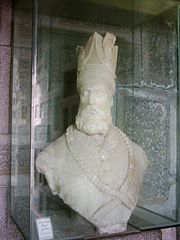
The following Shahanshahs had Mashhad as their capital:
Kianid Dynasty
- Malek Mahmoud Sistani 1722-1726
- Nadir Shah
- Adil Shah
- Ebrahim Afshar
- Shah Rukh of Persia
- Nadir Mirza of Khorasan
- Soleyman II 1750
Autonomous Government of Khorasan
- Colonel Mohammad Taghi Khan Pessyan
Famous people from Mashhad
- Religious & Political figures & Martyrs
- Seyed Ali Khamenei, born 17 July 1939, Supreme Leader of Iran
- Morteza Motahhari, February 3, 1920 - May 1, 1979, Iranian scholar, cleric, University lecturer, and politician
- Ali al-Sistani, Born approximately August 4, 1930, Twelver Shi'a marja residing in Iraq since 1951
- Hossein Vahid Khorasani, born in 1924, Iranian Twelver Shi'a Marja
- Mohammad-Kazem Khorasani, 1839–1911, Twelver Shi'a Marja, Persian (Iranian) politician, philosopher, reformer
- Ali Sayad Shirazi, chief-of-staff of the Iranian forces during Iran's 8-year war with Iraq
- Ali Shariati, November 23, 1933 – 1977, Iranian sociologist and revolutionary
- Abu Muslim Khorasani, c. 700 - 755, Abu Muslim Abd al-Rahman ibn Muslim al-Khorasani, Abbasid general of Persian origin
- Nizam al-Mulk, 1018 – 14 October 1092, celebrated Persian scholar and vizier of the Seljuq Empire
- Nasir al-Din al-Tusi, born February 1201 in Tūs, Khorasan – 26 June 1274 in al-Kāżimiyyah near Baghdad, Persian of the Ismaili and subesquently Twelver Shī‘ah Islamic belief
- Mohammad Bagher Ghalibaf, born September 23, 1961 in Torghabeh, near Mashhad,
- Martyr Kaveh,
- Al-Ghazali, born 1058 in Tūs and died 1111 in Tus, Islamic theologian, jurist, philosopher, cosmologist, physician, psychologist and mystic of Persian origin
- Manouchehr Eghbal, born October 14, 1909 - November 25, 1977, a Prime Minister of Iran
- Writers and Poets
- Ferdowsi, 935–1020 in Tus, a highly revered Persian poet
- Abu-Mansur Daqiqi, 935/942-976/980
- Abolfazl Beyhaqi, 995-1077, a Persian historian and author
- Nasir Khusraw, 1004 - 1088, a Persian poet, philosopher, Isma'ili scholar and a traveler
- Abusa'id Abolkhayr, December 7, 967 - January 12 , 1049 / Muharram ul Haram,1 ,357 - Sha'aban,4 ,440 AH, famous Persian Sufi who contributed extensively to the evolution of Sufi tradition
- Anvari, 1126–1189, one of the greatest Persian poets
- Farid ad-Din Attar, born 1145-46 in Nishapur – died c. 1221, a Persian and Muslim poet, Sufi, theoretician of mysticism, and hagiographer
- Mehdi Akhavan-Sales, 1928, Mashhad, Iran — 1990, Tehran, Iran, a prominent Persian poet
- Mohammad Taghi Bahar, November 6, 1884, Mashhad, Iran — April 22 , 1951, Tehran, Iran,
- Emad Khorasani,
- Gholam Hosein Yousefi,
- Artists
- Mohammad-Reza Shajarian, born September 23, 1940 in Mashhad, Iran, internationally and critically acclaimed Persian traditional singer, composer and Master (Ostad) of Persian music
- Kayvan Saket, Born in 1960 in Mashhad, Iran, Iranian composer, Radif-preserver, researcher, teacher, and excellent Tar and Setar instrumentalist and improvisor
- Reza Kianian, born July 17, 1951 in Mashhad, Iran, Iranian actor
- Dariush Arjmand, born 1944 in Mashad, Iranian actor
- Reza Attaran,
- Hamed Behdad, born 17 November 1973 in Mashhad, Iran, Iranian actor
- Mahdi Bemani Naeini, born November 3, 1968, Iranian film director, cinematographer, TV cameraman and photographer
- Rafi Pitts, born 1967 in Mashad, Iran, internationally acclaimed Iranian film director
- Iran Darroudi, born September 2, 1936 in Mashhad, Iranian artist
- Scientists
- Abū al-Wafā' al-Būzjānī, born 10 June 940 - died 1 July 998, Persian mathematician and astronomer
- Omar Khayyám, born Nishapur, Persia, May 18, 1048 – died December 4, 1122, Persian poet, mathematician, philosopher and astronomer who lived in Persia
- Anousheh Ansari, born 12 September 1966, the Iranian-American co-founder and chairman of Prodea Systems, Inc and a spaceflight participant with the Russian space program
- Sportspeople
- Heshmat Mohajerani, born January, 1936 in Mashhad, Iran, Iranian football coach, manager, and former player
- Khodadad Azizi, born June 22, 1971 in Mashhad, Iran, retired professional football striker
- Alireza Vahedi Nikbakht, born June 30, 1980 in Mashhad, Iranian professional football player
- Amir Reza Khadem, born February 10, 1970 in Mashhad
- Rasoul Khadem, born February 17, 1972 in Mashhad
- Others
- Ali Akbar Fayyaz,
- Mahmoud Khayami, born 1930 in Mashhad, Iran, Iranian born industrialist and philanthropist, of French nationality
- Hossein Sabet, Iranian businessman and Persian carpet dealer who owns Sabet International Trading Co.
Picture gallery
Sister cities
 Fresno, USA
Fresno, USA Great Neck, USA
Great Neck, USA Milano, Italy
Milano, Italy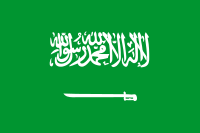 Medina, Saudi Arabia
Medina, Saudi Arabia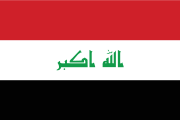 Najaf, Iraq
Najaf, Iraq Kerbela, Iraq
Kerbela, Iraq Kazimain, Iraq
Kazimain, Iraq Samarra, Iraq
Samarra, Iraq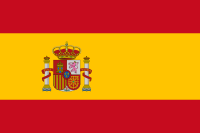 Santiago de Compostela, Spain
Santiago de Compostela, Spain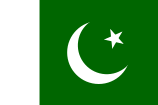 Lahore, Pakistan
Lahore, Pakistan Verona, Italy
Verona, Italy Pula, Croatia
Pula, Croatia Busan, South Korea
Busan, South Korea Kuala Lumpur, Malaysia - declared sister cities on October 2006. [13]
Kuala Lumpur, Malaysia - declared sister cities on October 2006. [13]
Consulates
| Flag | Country | Address |
|---|---|---|
| Afghanistan | Imam Khomeini Avenue Doshahid Street Sevom Isfand Sq. Mashad Iran
Tel: +98-511-8544829, +98-511-8597552 Fax:+98-511-8544404,E-mail: Afghanistan_ge_con_mashad@samanir.net |
|
| Iraq | ||
| Kazakhstan | Rahnemai Street 10, 41 h. Mashad Iran
Tel:+98-511-8417716 Fax: +98-511 8401293 E-mail: gcomrk@aftab.ws |
|
| Kyrgyzstan | No.209,next to Gas station, Abkooh Ave. 91839 Mashhad Iran
Tel:+98-511-6040364 |
|
| Pakistan | Khyaban-e-Imam Khomeini Opposite Bagh-e- Milli P.O. Box No.91375-1733 Mashad Iran
Tel:+98-511-2229845 Fax:+98-511-2227045 E-mail: pcmi@persiannet.net |
|
| Tajikistan | Darvazeh Quchan Sq. 91379 Mashhad Iran
Tel:+98-511-7275480 Fax:+98-511-7275480 |
|
| Turkmenistan | No.34,Konsoolgari Alley,10th Day Sq. 91386 Mashhad Iran
Tel:+98-511-8547066 Fax:+98-511-8547073 |
|
| Saudi Arabia | No. 4 - Molavi St. Sajjad Blvd. Mashad Iran
Tel:+98-511-6076276,+98-511-6076279 Fax:+98-511-6076273,+98-511-6076278 |
Footnotes
- ↑ 1.0 1.1 1.2 Statistical Centre of Iran, 2006 Population and Housing Census, Administrative units of Razavi Khorasan and their populations. (excel-file, in Persian) Accessed on 2008-07-05.
- ↑ 2.0 2.1 2.2 2.3 "Sacred Sites: Mashhad, Iran". sacredsites.com. Retrieved on 2006-03-13.
- ↑ Zabeth (1999) pp. 12-13
- ↑ Zabeth (1999) pp. 13-16
- ↑ Zabeth (1999) pp. 14-15
- ↑ Zabeth (1999) pp. 14-15
- ↑ Ervand, History of Modern Iran, (2008), p.94
- ↑ Bakhash, Shaul, Reign of the Ayatollahs : Iran and the Islamic Revolution by Shaul, Bakhash, Basic Books, c1984, p.22
- ↑ ABC Evening News for Monday, Jun 20, 1994
- ↑ Explosive circles: Iran. (Mashhad bombing)
- ↑ SIPAH-E-SAHABA PAKISTAN, LASHKAR-E-JHANGVI, BIN LADEN & RAMZI YOUSEF
- ↑ Patai, Raphael (1997). Jadid al-Islam: The Jewish "New Muslims" of Meshhed. Detroit: Wayne State University Press. ISBN 0-8143-2652-8.
- ↑ (3 October 2006). "Mashad-Kuala Lumpur Become Sister cities".Kuala Lumpur News
References
- Zabeth, Hyder Reza (1999). Landmarks of Mashhad. Alhoda UK. ISBN 9644442210.
See also
- Allahdad incident
- The National Library of Astan Quds Razavi
External links
- Mashhad data
- about Mashhad (in Persian)
- City of Mashhad Official website (in Persian)
- e-Mashhad Mashhad Portal Official website (in Persian)
- Mashhadema Mashhad Portal website (in Persian)
- Mashhad
- Mashhad
- Mashhad
- Imam Reza Network
- http://www.razavi.ir/
- Ferdowsi University of Mashhad
- Islamic Azad University of Mashhad
- Population estimates for Mashhad, Iran, 1950-2015
- Hossein Davoudi, Dizbād: A Staircase to History, in Persian, Jadid Online, 2008, [1].
A Slide Show of Dizbād, by Hossein Davoudi, Jadid Online, 2008, [2] (5 min 39 sec).
Note: Dizbād is a small village between Mashhad and Neyshābūr, located at some 40 km distance from Mashhad.
|
||||||||||||||||
.



